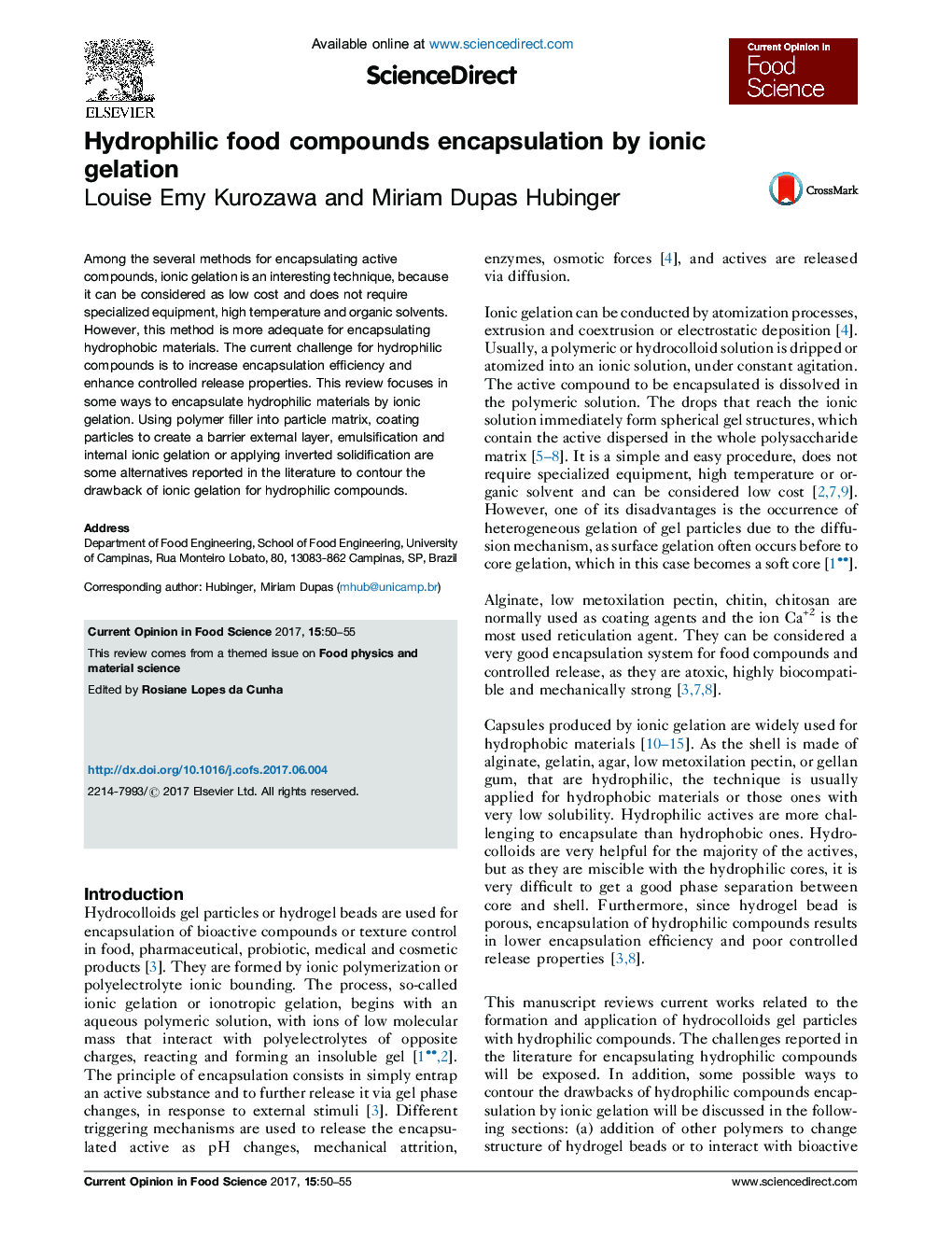| Article ID | Journal | Published Year | Pages | File Type |
|---|---|---|---|---|
| 5520890 | Current Opinion in Food Science | 2017 | 6 Pages |
â¢Hydrophilic actives are more challenging to encapsulate than hydrophobic ones.â¢In general, addition of polymers on gel particles improves encapsulation efficiency.â¢Coating gel particles with an external layer prolongs the release of hydrophilic actives.â¢Internal gelation occurs in oil phase, reducing compound loss during encapsulation.
Among the several methods for encapsulating active compounds, ionic gelation is an interesting technique, because it can be considered as low cost and does not require specialized equipment, high temperature and organic solvents. However, this method is more adequate for encapsulating hydrophobic materials. The current challenge for hydrophilic compounds is to increase encapsulation efficiency and enhance controlled release properties. This review focuses in some ways to encapsulate hydrophilic materials by ionic gelation. Using polymer filler into particle matrix, coating particles to create a barrier external layer, emulsification and internal ionic gelation or applying inverted solidification are some alternatives reported in the literature to contour the drawback of ionic gelation for hydrophilic compounds.
